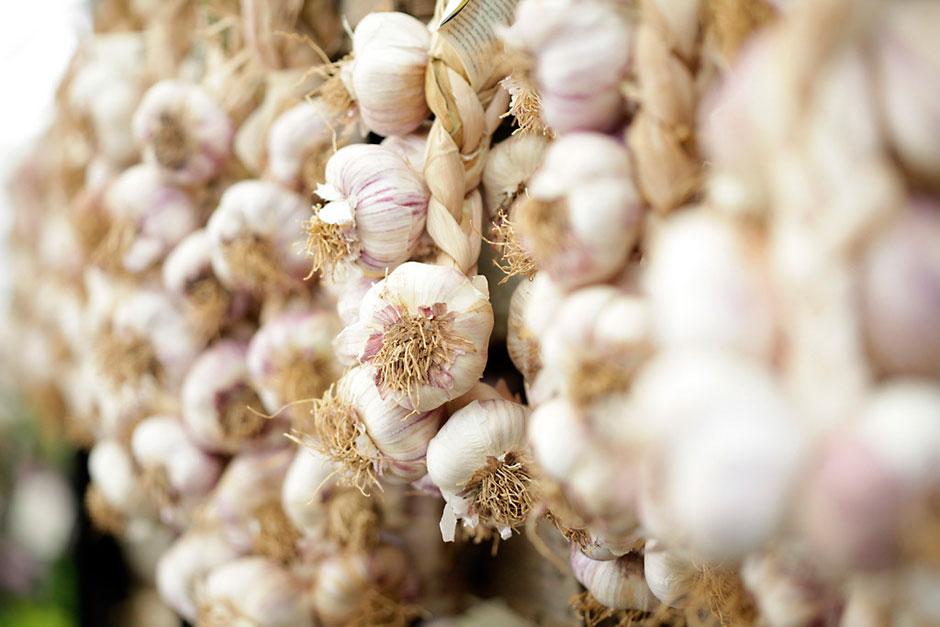Garlic
Garlic is known for having a very strong smell - luckily it's used a lot in cooking as it also tastes really yummy

- Season
- Garlic can be sown in autumn or spring
- Name
Allium sativum. (Allium is Latin for garlic, sativum is Latin for cultivated or farmed).
- Common Name
- Garlic
- Description
- Garlic is a member of the ‘onion family’ (known as alliums), which include onions, leeks, chives, spring onions and shallots. Garlic is a bulb that is made up of a number of segments called cloves.
- History
The origin of garlic is unknown, but it has been used as a plant for medicine and as food for more than 4,000 years. In the Middle Ages it was thought that garlic helped to prevent the plague. The English word garlic originates from the Middle Ages, gar (spear), leac (pot herb).
- Interesting Facts
During World War II, garlic was used as an antiseptic to disinfect open wounds and prevent gangrene.
Growing Tips
Growing Conditions
-
Garlic needs to be grown in an open, sunny site with fertile, well-dug soil, so that the bulbs get the warmth they need to ripen. The soil should be light and free draining.
-
Make sure you do not plant the garlic in soil that has been recently manured as it may cause the bulbs to rot.
-
Buy your garlic bulbs for planting from seed supplier’s catalogues or garden centres.
When to grow
-
Garlic can be planted between October and December, so November is a good time to get planting
-
Try varieties such as 'Early Wight', 'Purple Wight', 'Solent Wight', 'Arno', 'Germidour', and 'Cristo'
-
The garlic will be ready to harvest between June and August
-
Garlic can also be planted in the spring
You will need
-
Gardening gloves
-
A rake
-
A trowel or dibber
-
Garlic bulbs
How to grow
-
Make sure the ground is free of weeds by weeding with a hand trowel and has been raked to a level surface.
-
Gently break the bulb of garlic open and detach the cloves off the bulbs, you don’t need to peel the paper skins off the cloves.
-
The garlic cloves can be planted in rows that are 30cm apart. In each row plant the cloves about 10cm apart.
-
Each clove should be gently pushed into the soil to a depth of about 3cm, with the flat basal plate (the bit at the bottom of the garlic, from which it will grow) facing downwards, and the pointed end facing the sky, so that it's just buried below the soil surface.
Maintenance
-
As the garlic begins to grow, continue to weed carefully around the plants
-
Check your crop after planting for any uprooted bulbs caused by animals and birds, and push them back into the soil
Harvesting
-
The garlic is ready to harvest when the leaves begin to turn yellow and die, usually from June and July onwards
-
Lift the garlic carefully using a fork to gently loosen the soil around the bulbs
-
Spread the bulbs on netting, wire mesh, sacking or trays to dry out properly
-
After they're dry they can be plaited using the dried leaves, hung in bunches or stored in net bags
Pest and disease problems
Garlic is largely pest and disease free, but sometimes ‘rust’, a fungal disease of the foliage, can be damaging. If this happens, then grow garlic in a different part of the garden in future years and destroy all of the infected leaves.
White rot disease is present in some soils and attacks the roots, If this happens grow garlic in soil-based tubs.
More advice on garlic

